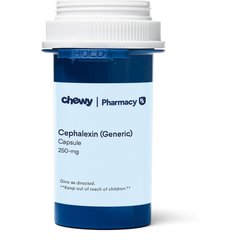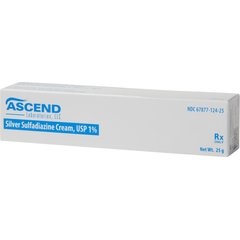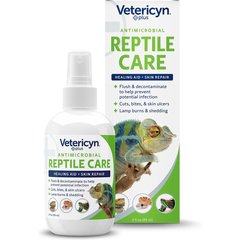Thermal Burns in Reptiles
Tarja Miettinen/iStock / Getty Images Plus via Getty Images
What Are Thermal Burns in Reptiles?
Reptiles are ectotherms, or cold-blooded animals, which means they rely on external heat sources to regulate their body temperature. As pet parents strive to provide the best care for their scaly friends, setting up external heat support—such as heat lamps and heating pads—is crucial to their well-being. However, reptiles may be burned by these sources if they are set up incorrectly—in fact, this is the most common cause of thermal burns in pet reptiles.
Depending on the severity of the burn, thermal injuries are considered very serious in reptiles and likely require evaluation and treatment by a veterinarian to ensure the best possible outcome for these patients.
Symptoms of Thermal Burns in Reptiles
Burns can vary in severity and are classified into three degrees, based on the depth and impact of the damage they cause. Following are signs of each burn class in thermal burns in reptiles:
First-Degree Burns
-
Reddening of the skin
-
“Bruised” appearance under the scales
-
Small blisters
-
Singed appearance of the scales
Second-Degree Burns
-
Pain—Reptiles show pain in various ways, including:
-
Hunched posture
-
Abnormal behavior
-
Squinting eyes
-
Decreased movement
-
Guarding painful areas
-
Decreased appetite
-
-
Blistering
-
Oozing
-
Discoloration
Third-Degree Burns
-
Charring or blackening of the skin
-
White discoloration of the scales
-
Deep and extensive wounds
Causes of Thermal Burns in Reptiles
Thermal burns in reptiles can occur easily, so it’s important for pet parents to understand how they happen. Let’s start by looking at the three primary ways we can provide the necessary supplemental heat for our reptile friends—each of which can result in thermal burns if not used properly.
-
Convection: warm water or air that blows or flows across the reptile’s body
-
Radiant: absorption of heat waves provided by the sun or a heating element, such as a heat lamp
-
Conduction: heat transferred from one object, like a “hot rock,” to another via direct contact
Interestingly, scientists have found that reptiles perceive and evaluate heat differently than mammals. While the exact reason is unknown, studies suggest that their receptors for heat and pain may be separate, as reptiles fail to readily withdraw from heating sources that are dangerously hot.
A wild reptile’s natural environment provides warmth, heat, and UV rays, so pet reptiles will also seek out these things as a means of survival. As such, they may get too close to heat sources and not move away from areas that are damagingly hot to their skin and tissues.
Because it can take a few days for a thermal injury to fully set in, pet reptiles may not perceive discomfort in the moment of the heat injury itself. This is most often how they get burned.
How Veterinarians Diagnose Thermal Burns in Reptiles
In most cases of suspected thermal burns, a thorough physical examination of the reptile and a history from the pet parent are the primary tools veterinarians use to diagnose the injury.
The veterinarian will carefully examine the pet and evaluate their overall health, as well as get a good sense of the severity of the burn to formulate a treatment plan.
In some cases, they may obtain bloodwork to assess any underlying conditions such as dehydration and nutrition status to help determine the most appropriate care options and prognosis for the pet.
Treatment of Thermal Burns in Reptiles
With proper care and time, reptiles have an incredible capacity to heal. Treatment should be prompt and aimed at controlling the pet’s pain, preventing infection, and addressing shock and possible fluid loss.
For small, very minor first-degree burns, cool water rinses on the burn site (for no more than 20 minutes) may help reduce pain and swelling. Ice should NEVER be used, as it can cause frostbite, which can further damage the tissue.
If blisters are present, they should never be intentionally broken. Keeping the wound covered with a sterile, nonstick pad and moving the pet to a secondary enclosure without substrate during recovery can help keep the wound and dressings clean and free from debris.
For second- and third-degree burns, the concern for the patient is more significant. Treatment for these more severe burns may include:
-
Pain management with anti-inflammatory and opioid medications
-
Wound cleaning
-
Debridement (removal of damaged tissue from the wound)
-
Antibiotic therapies such as cefazolin injections or oral cephalexin
-
Topical antibiotic treatments such as silver sulfadiazine cream
-
Fluid administration to counteract shock and fluid losses
Recommended Products
Recovery and Management of Thermal Burns in Reptiles
The keys to thermal burn recovery in pet reptiles are time and cleanliness. Reptile wound healing is slow and occurs from the outer edges of the burn site inward.
The biggest risk to the animal is infection, so it’s important to keep wound dressings fresh and the reptile’s enclosure clean. Veterinary staff can provide dressing change supplies and schedules and can train pet parents to ensure the wound is clean and change bandages at home.
Antimicrobial wound sprays may be helpful, and the veterinarian may prescribe an antimicrobial burn cream to be applied at home during recovery.
Recommended Products
Prevention of Thermal Burns in Reptiles
To prevent thermal burns, it’s important to research the appropriate care and enclosure setup before you bring home a pet reptile. This way, you can make sure that the heating element you buy is the most appropriate one for your pet.
Additionally, heating lamps should always be external to the enclosure. This will ensure that the animal can’t get too close, touch the lamp, or knock it down into the tank, causing a fire hazard, contact burns, or damage to the lamp. A damaged lamp can also result in a loss of the heat source, which can lead to hypothermia in reptiles.
Keep in mind that all bulbs are not created equal, and it’s critical to your pet reptile’s well-being that the light wattage and distance from their basking point are appropriate and safe, as too close or too intense can result in unintentional thermal burns.
Under-tank heating pads can be helpful for larger, non-climbing reptiles, but there needs to be adequate substrate between the reptile and the tank floor, creating the appropriate distance and barrier between the animal’s skin and the heated area. The more precisely the heating pad can be monitored and regulated, the safer.
While widely available in pet stores, basking “hot rocks” are among the most dangerous heating methods and the most common cause of burns in reptiles. These are generally discouraged in favor of external sources like heat lamps and heating pads.
Thermal Burns in Reptiles FAQs
What is the difference between a burn and a thermal burn?
Burns result from a transfer of energy from one source to another, resulting in damage. These can be caused by chemical, electrical, and thermal means, or from radiation. Thermal burns specifically involve heat transfer that causes damage.
How long does it take for reptile burns to heal?
Reptile burns can take weeks to months to heal, so diligent caregiving and patience are essential.



